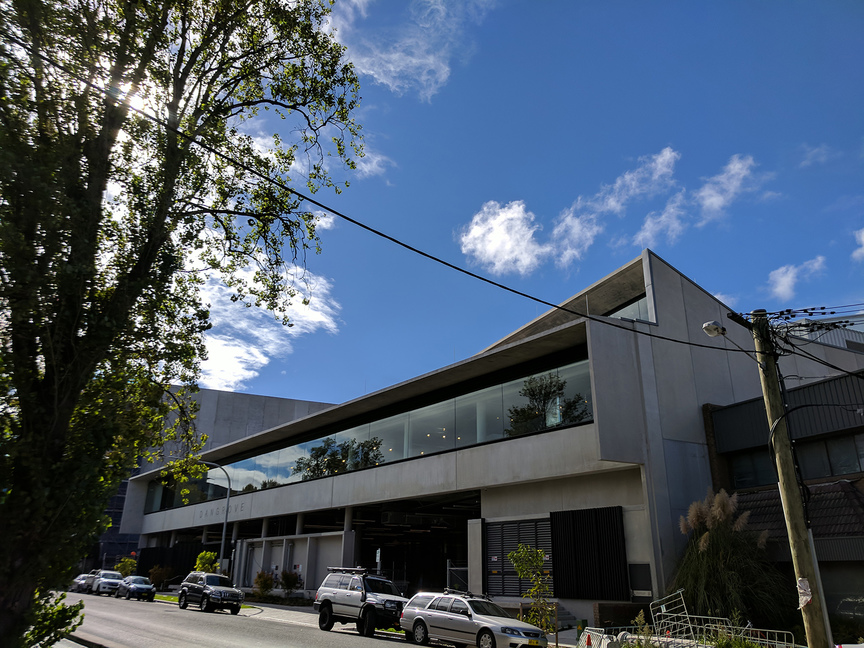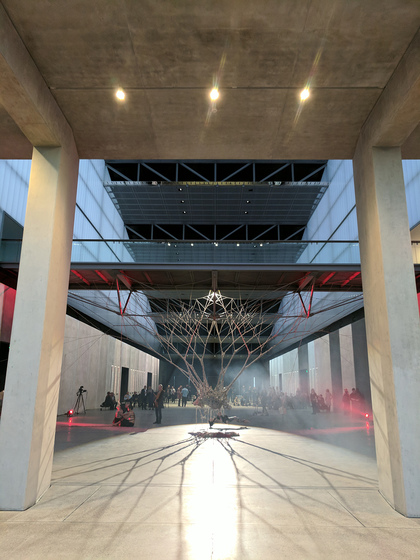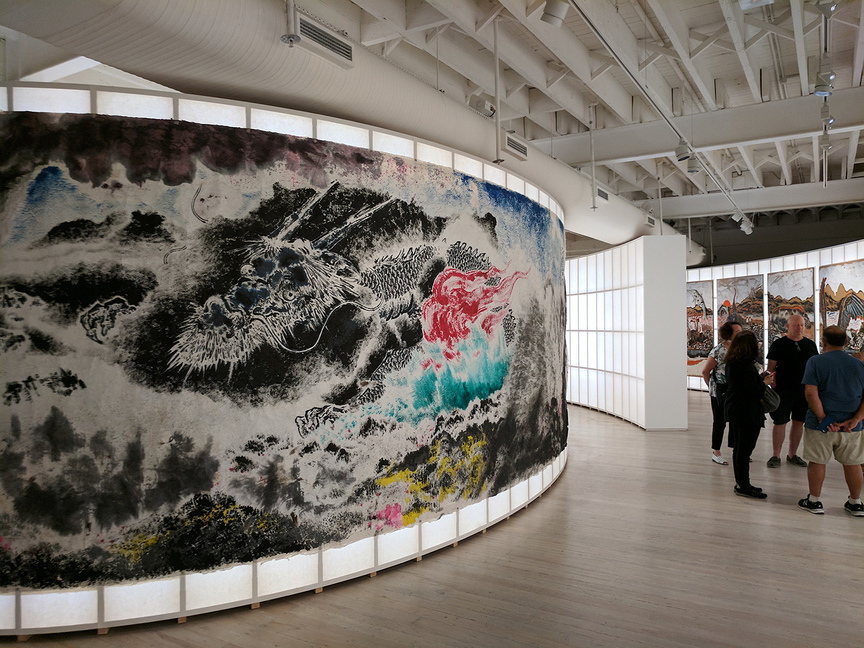
R
E
V N
E
X
T
In 2009, Zimbabwe-born art collector and philanthropist Judith Neilson launched Sydney’s White Rabbit Gallery in a refurbished four-story garage. The not-for-profit platform presents exhibitions of works drawn from Neilson’s collection of contemporary Chinese art made in or after 2000—the year she started amassing art. When White Rabbit opened, the collection comprised 200 works by 75 artists, but since then has grown in parallel with Neilson’s confidence as a collector. Today it numbers 3,500 pieces by 700 artists, and includes seminal projects, such as Ai Weiwei’s installation Sunflower Seeds (2010), which features 500 kilograms of porcelain seeds; Xu Zhen’s gothic cathedral Play 201301 (2013), fashioned from black latex sex toys; Liu Xiaodong’s robotic painting machine Weight of Insomnia (2016); and Liu Wei’s immense, geometric installation Density 1-6 (2013). The collection is still increasing exponentially in volume as a result of Neilson’s regular buying sprees in China.
In May, Neilson unveiled Dangrove, a vast, 10,000-square-meter facility in Sydney that has been designed to last at least 100 years. Within the pharaonic building are copious storage areas, a main hall the size of a soccer field, ceilings that soar from eight to 30 meters in height, conservation rooms, a library and video-viewing studios—all dust free, temperature controlled and hermetically sealed. The primary purpose of Dangrove—named after Neilson’s grandmother’s farm in South Africa—is to store the growing White Rabbit collection, which she wants to keep together for at least a century (though she said she would settle for 50 years after her demise). However, Dangrove will also serve as a private museum with a dedicated staff, and a resource for scholars worldwide. The space opened this March without much fanfare and was then officially inaugurated on May 20 by Australian performance artist Garth Knight, who reprised one of his shibari (“to tie,” or simply, bondage) works in the main hall before a small gathering of Neilson’s friends and supporters. Using multiple skeins of suspended rope counterbalanced by rocks, Knight bound two partially clothed assistants until they became suspended off the floor as an allegory on life, death and regeneration. The over-two-hour performance was, Neilson later said, precisely the sort of event she intends to present in Dangrove’s main hall.
Dangrove monumentalizes Neilson’s dedication to contemporary Chinese art, which remains steadfast despite how some in Sydney’s art scene see her as a dilettante who buys work that will not stand the test of time and have questioned her judgment. It is a perception that Neilson is well aware of.“Yes, I am seen this way. People assume I know nothing about art. But my grandfather started an art school in South Africa in 1927. I went to art school in South Africa. I was a graphic artist for 20 years and I’ve tried everything to do with art, maybe not always that well, but at least I tried. And I’ve learned to respect artists this way,” she said. Neilson refuses to allow the hearsay change her approach to art. When she first began amassing contemporary Chinese works, the reasoning behind her interest was startlingly simple. “I fell in love with the art I saw [in China],” she explained. “There are more artists there than anywhere else in the world, both good and bad.” It is the same unadulterated interest that drives her now. “The way I buy art, direct from an artist’s studio, has not changed since I started. I buy visually. No one else has any say in it. The decision is always mine alone. I simply buy what I like and what appeals to my eye. Can I live with it? This is test I use when buying art. If a work has to be explained then it is not for me.”
In 2019, White Rabbit will celebrate its tenth anniversary. The gallery’s audience now averages 100,000 annually. They are exactly the type of crowd Neilson had in mind when establishing the platform. “They are often people who are intimidated by institutional galleries [ . . . ] and who perhaps didn’t even know they liked contemporary art,” she said, before reiterating that White Rabbit will exist for as long as there is a need for it. The gallery’s most recent show, “The Sleeper Awakes,” was a tightly curated exhibition and included animated videos by Sun Xun; Feng Mengbo’s interactive video-game installation Long March: Restart (2008); and Xu Bing’s first feature-length film, Dragonfly Eyes (2016–17), pieced together from thousands of CCTV surveillance clips. The exhibition drew in a “record-breaking” number of visitors, according to the gallery, and as a result was extended by one week. But it is clear that the most important thing now for Neilson is Dangrove. “It will house the collection in perpetuity. There is nothing like it anywhere in the world [ . . . ] Dangrove will not be just for scholars and researchers but it will also be a place for experimental performances and for young curators to hone their curatorial skills.” She then asserted: “I believe the collection is now the world’s largest private collection of Chinese contemporary art. I don’t consider that I own it. I am simply the custodian of the work.”
Michael Young is a contributing editor of ArtAsiaPacific.
To read more of ArtAsiaPacific’s articles, visit our Digital Library.






